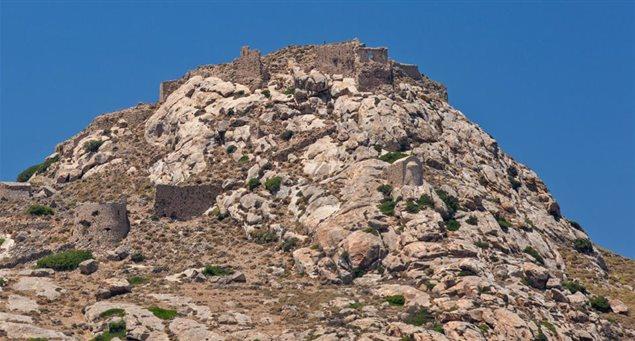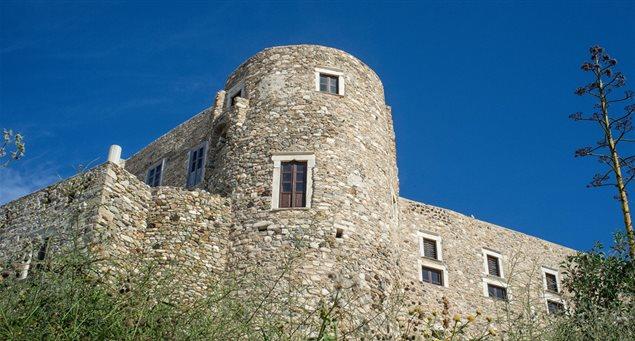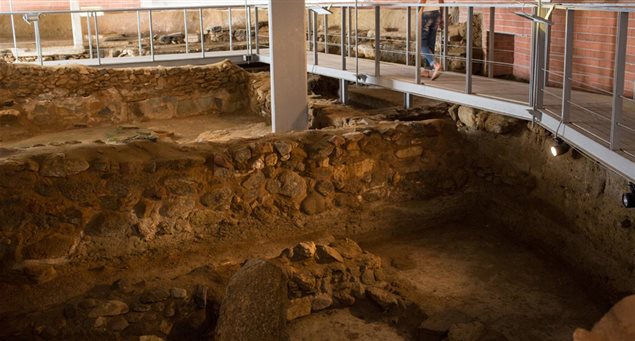
Naxos has been uninterruptedly inhabited since the 4th millennium BC. The first inhabitants are thought to have come from the northeastern Greek region of Thrace.
According to the myth, King Voreas’s son, Voutis, seeking women companions, arrived in Thessaly, central Greece, where he pursued the Bacchae nymphs, abducted some of them, including Koronis and Iphimedia,and brought them to Naxos.
The Thracians dominated for 200 years and were succeeded by the Carians. The latter came from Asia Minor and were led by Naxos, who imposed his name on the island.
Homeric-era elements survive in idiomatic forms spoken on Naxos today.
The oldest, to date, archaeological find on the island and among the oldest in Greece was located in Stelida- pyrite processing workshops of the Middle and Upper Paleolithic Period (c. 80000-10000 BC).
Other finds attest to a developed society at the end of the Neolithic civilization but Naxos’s first important period of civilization is the Cycladic, in the 3rd millennium BC.
There is evidence that the island had a dense population, mostly spread in small settlements on its eastern side. A larger and much more developed settlement, however, with meticulously built houses and numerous pottery items, has been discovered at Grotta, where main town Chora is today.
Cemeteries of the era have been found throughout the island, with masterpieces of art and style virtually found in all tombs.
Naxos emerges from archaeological research as one of the most important centers of the Proto – Cycladic civilization.
An oligarchic society ruled by a sizeable and powerful nobility, which lived on the hill of present-day Kastro in Chora and the various medium-size towns of the island, had been formed by the 7th century.
The majority of the people were engaged in agriculture, animal farming, fishing and crafts.
Naxos colonized Arkesini – and perhaps Aegiali on Amorgos – and formed a close relationship with Thera (Santorini). In 734 BC it offered its navy to the city of Chalkis (on the island of Euboea), to help the city transport colonists to Sicily, where one of the first Greek colonies was named Naxos.
The archaeological finds from the Mycenean and Geometric eras, particularly the ceramic items, are highly aesthetic. The gigantic statues of Naxos – Kouroi- lie unfinished at the ancient marble quarries of Melanes and Apollonas, abandoned due to technical reasons or political and accidental events, such as the death of a client. Another famous find also dating to this era is the statue of Artemis, a votive offering ofNicandre (650 BC) –of a rich Naxiot family at the holy sanctuary island and religious center of Delos.
The Sphinx of Delphi, the famous Lions, the House of Naxiots and numerous votive offerings at Delos and other prominent sanctuaries stand as irrefutable witnesses of the civilization, prosperity and power of Naxos and its economic dominance over this most important religious center.
It was in Naxos that the large-scale plastic arts – born in Greece during the Archaic period- first showed all the elements of the monumental.
This fact, combined with the development of the small-scale plastic art (idols) during the 3rd millennium,led to the view that the plastic arts were born on Naxos.
The abundance of marble undoubtedly contributed to this development. Emery – an exclusively Naxiot product- was used in the final abrasion and polishing of works in marble.
Naxiot craftsmen were much sought and appear to have been so rich that they donated themselves to the gods large and costly works of theirs.
Naxos also made a key contribution to the emergence of the monumental form of Greek architecture, particularly of the marble Ionian school.
At the Yria sanctuary, one can see – step-by-step – all the phases of the development of Greek architecture: from the single-space temple (around 800 BC), made from woodwork and bricks, to the archaic, Ionian-style Hekatompedon (100 feet long), which included the adyton –reserved for mystical worship-, a monumental colonnade at the entrance, marble altar and marble colonnades in the interior.
The all-marble temple of Apollo and Demeter at Gyroulas, Sagri is of the archaic type of Telesterion –initiation hall dedicated to mystical rituals. It is the sole well-preserved example of a Telesterion, belonging to the period of the tyrant Lygdamis (around 530 BC) – in common with the great temple of Apollo, on the isle of Palatia, at the Chora harbor.
The Classical era on Naxos –as in the rest of Greece- was marked by tremendous cultural achievements but also numerous and long wars.
In 490 BC Naxiots adopted a passive stance in the face of the Persian attack. Most fled to the mountains, while those who remained in the city were taken captive, their city was destroyed and the sanctuaries were torched.
In the naval battle of Salamis, however, the Naxiots absconded from the Persians and fought on the side of the Athenians.
In the 4th century, Athens and Sparta -the two great powers of the day- clashed over control of Naxos. While a member of the Island Commonwealth, Naxos fell in succession under the influence of the Ptolemies of Egypt, the Macedonians and the Rhodians.
After 41 BC Naxos was part of the Roman province of the islands which was governed from Rhodes. The Romans often used it as a place of exile. Its religious affairs were also administered from Rhodes during the early Christian era.




